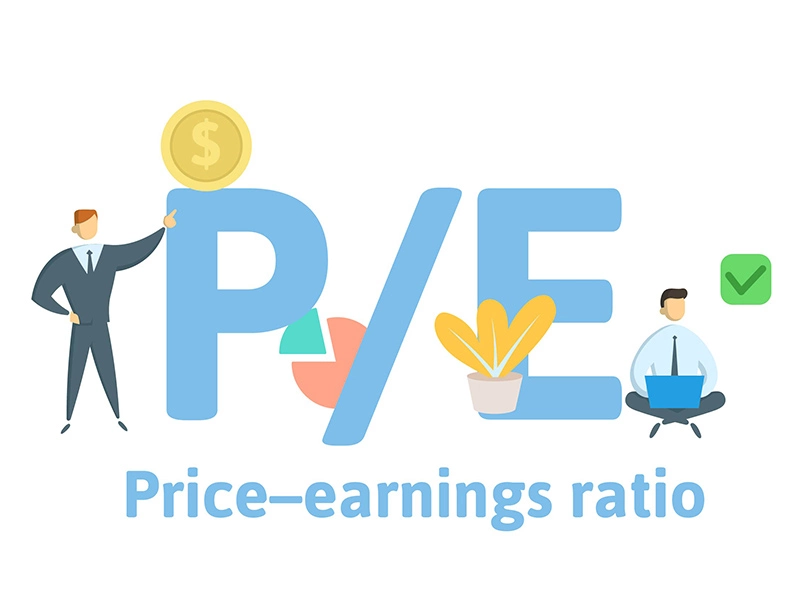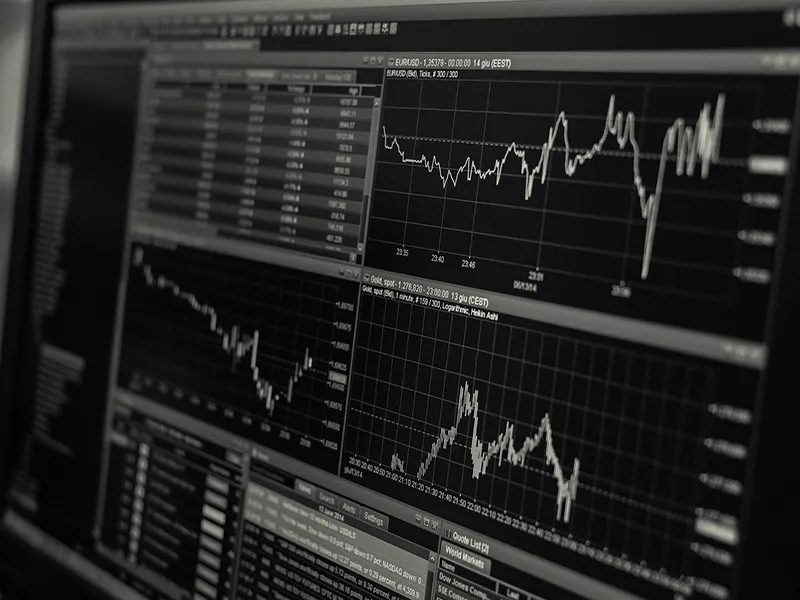
Investment in stock markets requires detailed analysis on fundamental and technical levels. Technical analysis requires in-depth knowledge and reading of various charts and other aspects like pie diagrams, candlesticks, etc. Fundamental analysis on the other hand is studying and analyzing the various ratios based on the financial statements of the company, in addition to the industry and the general economic prospects. One of the many common ratios analyzed by investors is the PE ratio.
Let us understand the meaning and various details related to the PE ratio in this article.
Read More – What is Fundamental Analysis in Stock Market?
What is PE Ratio?
PE Ratio is the relationship between the earnings per share (EPS) and the current stock price of the company. PE ratio is used as a measure of the performance of the company in comparison to its peers or in comparison to the industry average. In simple terms, it is the price that the market is willing to pay for the stock. PE ratio is therefore a direct reflection of the growth and progress of the company. If the earnings of the company are increasing on a constant basis, it will reflect in the PE ratio of the company too.
Calculation of PE ratio
We have discussed the meaning of the PE ratio above, now let us see the formula for calculating the PE ratio.
PE ratio is calculated based on the earnings per share and the current market price of a stock.
The formula for calculating the PE ratio is given below.
PE ratio = MPS/ EPS
Where,
- MPS is the Market Price Per Share
- EPS is the Earnings Per Share
The market price per share is the current market price at which the share is traded in the market.
The earnings per share are usually calculated for the past twelve months after considering the total outstanding shares of the company. If the company has many types of ordinary shares for different periods and of different face values, the EPS will be considered using the weighted average.
Let us consider the following example to understand the calculation of the PE ratio of any company.
Company A has shares traded at the market price of Rs. 200. The EPS of the shares of Company A is 40. The PE ratio in such a case is calculated below.
PE ratio = 200/40
PE ratio = 5
In the above example, the PE ratio of 5 indicates that the market price of the company is 5 times the earnings of the company.
Interpreting PE ratio: What does it mean?
Here’s what one can interpret of the PE ratio:
- The PE ratio, or price-to-earnings ratio, helps assess a stock’s valuation relative to its earnings.
- A high PE ratio suggests the stock is relatively expensive compared to its earnings, possibly indicating growth expectations. Example: A PE ratio of 30 means you’re paying 30 times the company’s earnings for the stock.
- A low PE ratio may indicate an undervalued stock or a company facing challenges. Example: A PE ratio of 10 means you’re paying only 10 times the company’s earnings for the stock.
- Consider the industry, company prospects, and future growth potential alongside the PE ratio for a comprehensive investment analysis.
What are the types of PE ratios?
PE ratio is used to identify growth or value stocks and also the correct valuation of the company while making an investment decision. For this, investors can use two main types of PE ratios namely Trailing PE and Forward PE.
Trailing Twelve Months PE
The calculation of PE ratio done based on the past performance of the company is known as trailing twelve months PE. Most investors rely on the trailing PE to make their investment decisions as it is based on the actual figures of EPS and the prevailing stock price. However, trailing PE considers the past EPS of the reported quarters of the previous year, hence it often does not reflect the real-time position of the company.
Forward PE
Forward PE is calculated based on the current market price of a particular stock and the future earnings of the company. This ratio, therefore, provides an idea of the future position of the company. However, this factor can be used to mislead the investors by overestimating or underestimating the earnings of the company. Hence, the investors need to be prudent while using the Forward PE in making their investment decisions.
Pros and Cons of PE Ratio
Significance of the PE Ratio:
- The PE ratio is a fundamental analysis tool used by investors to assess stocks, sectors, and indices like NIFTY or Sensex.
- It helps determine a stock’s relative position compared to peers or the industry average, indicating whether it is a growth or value stock.
- Can be used for comparing past and current stock performance and identifying optimal buy or sell points.
Limitations of the PE Ratio:
- The PE ratio should not be the sole or primary factor in investment decisions.
- It is a comparative measure, requiring analysis of other company parameters and financial statements for a comprehensive assessment.
- Consideration of industry trends, competition, and company fundamentals is essential for a complete investment evaluation.
Conclusion
PE ratio has been traditionally used by investors and analysts to assess any investment opportunity. It shows the relative position of the company in comparison to its peer and its position in the overall industry. It has a crucial place in the fundamental analysis of a company’s stock but cannot be considered as a standalone point of reference by new3 investors or experts to determine the viability of the investment.
FAQS
The alternate formula for calculating the PE ratio of a company is,
PE ratio = Market capitalization/ Net Earnings
Negative PE ratio is derived on account of loss on the earnings of a company. Such a PE ratio is invalid and cannot be used to make any investment decision.
PE ratio helps the investors know the real value of their investment. It can help the investors in analyzing the optimum price to be paid for a stock based on the stock price and the current or future EPS as the case may be.
There is no optimal or ideal ratio for any particular stock or industry. PE Ratio is a relative measure and what can be considered as a good PE ratio for one stock in a particular sector or industry may not be the case for another sector.
The PE ratio calculated using any of the two methods (Trailing PE ratio or Forward PE ratio) is known as the absolute PE.


























